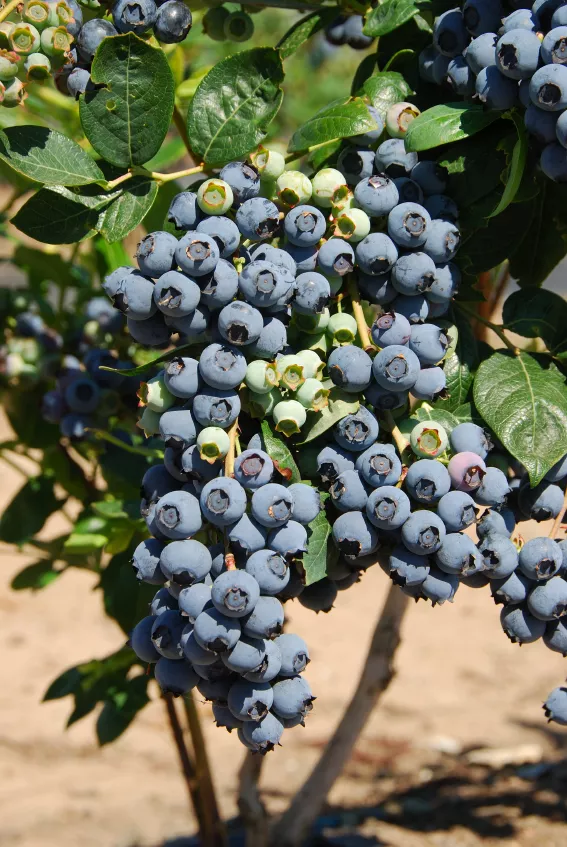- Differences between forest blueberries and cultivated blueberries
- The demands of cultivated blueberries on the location
- Properly care for and fertilize cultivated blueberries
- Harvesting and processing cultivated blueberries
- tips and tricks
For many people, collecting blueberries in the forest is one of the ways to cool down on hot summer days. However, cultivated blueberries for the garden also offer fruity refreshment in hot weather.

Differences between forest blueberries and cultivated blueberries
The cultivated blueberries offered by specialist retailers are actually botanically only very distantly related to the blueberries found in the forest in this country. There are also clear differences between the varieties in terms of the growth form of the bushes and the size and color of the fruits. While forest blueberries rarely grow higher than about 40 centimetres, cultivated blueberries can grow bushes up to 2.5 and 3 meters high. Not only can you pick significantly more fruit from cultivated blueberries, you can also find most of them at eye level on the loosely protruding branches. In contrast to forest blueberries, the flesh of cultivated blueberries is almost white, so that the juice does not turn fingers and tongue blue. Although forest blueberries taste a bit more aromatic than cultivated blueberries, they can hardly keep up with the plump and juicy fruits of the cultivated varieties. Particularly proven varieties among cultivated blueberries are:
- Northland
- pilot
- Bluecrop
The demands of cultivated blueberries on the location
Despite all the differences, forest blueberries and cultivated blueberries are also very similar in some respects. Cultivated blueberries do not tolerate too calcareous soil at their location and require a rather acidic soil environment with a pH value between 4.0 and 5.0. In contrast to wild forest blueberries, cultivated blueberries prefer a location in full sun, but must also be watered regularly and well during the harvest season. However, they do not tolerate waterlogging very well, which is why it is particularly important to ensure that the subsoil is loose. If you do not have acidic soil in the garden, you can line the planting hole for the cultivated blueberries with special rhododendron and azalea soil.
Properly care for and fertilize cultivated blueberries
In general, mature blueberry bushes do not require regular pruning to maintain their shape. However, removing particularly old shoots can stimulate new growth and thus also lead to higher fruit set in the following year. If you want to make a cut, you should do it in the autumn after harvest. This will prevent the shrubs from drying out too much during hot weather in summer. Otherwise, the only part of caring for cultivated blueberries is watering when necessary and fertilizing in two phases. You can increase harvest success if you give your plants a portion each of lime-free fertilizer in early spring and towards the end of May.
Harvesting and processing cultivated blueberries
The harvest time for blueberries in the garden begins around the beginning of July and sometimes extends into September due to the continuous ripening of the fruit. Since blueberries have a very limited shelf life when eaten fresh, freezing or preserving them for later use is recommended.
tips and tricks
You can easily avoid waterlogging of the blueberry roots by creating a slightly elevated mound of earth in the row of plants when planting blueberries.